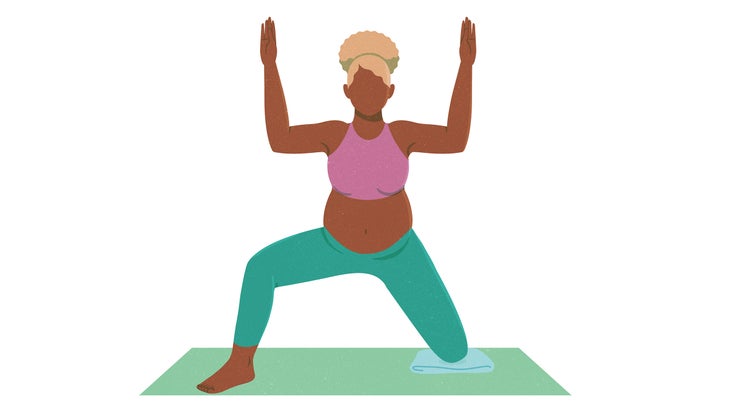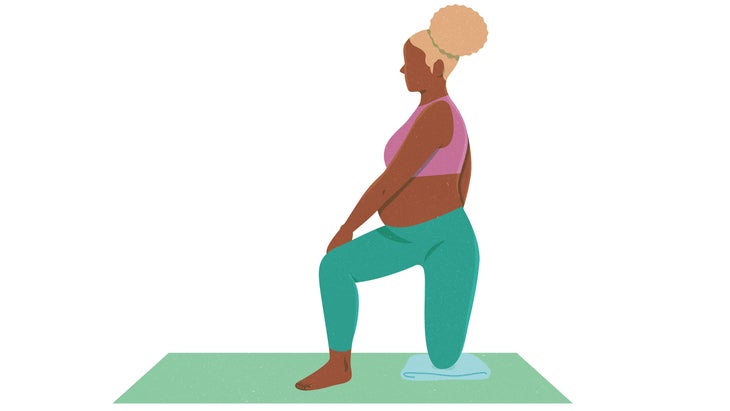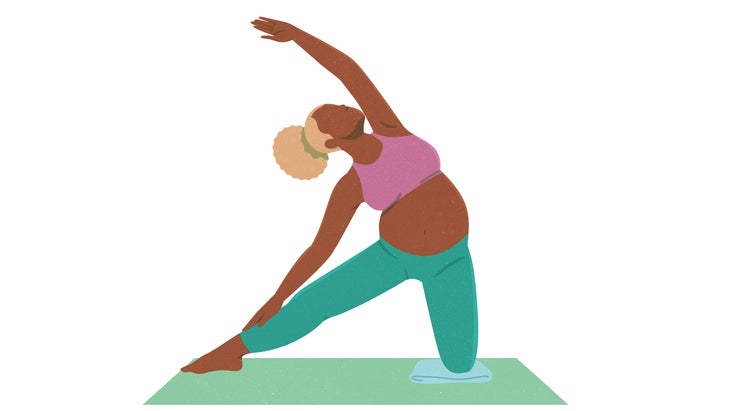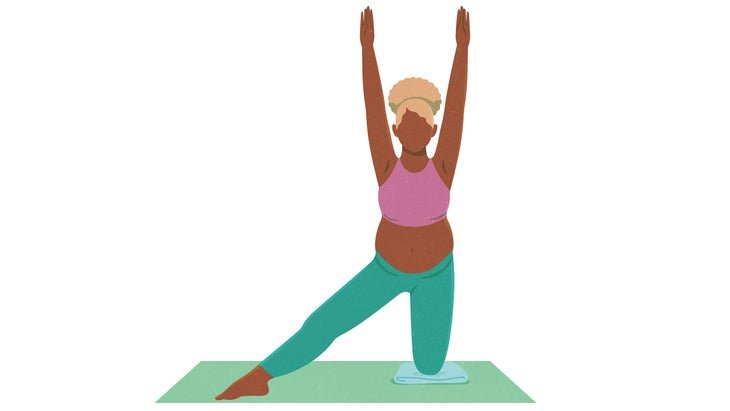Every pregnancy is different for every person. While you may experience joy and excitement at the thought of bringing new life into the world, you can also confront feelings of fear, doubt, and worry about all the changes to come—within your body and your life.
Corinne Andrews knows this all too well. As a Massachusetts-based prenatal and postnatal yoga instructor and mother of two, Andrews has worked with expectant parents for years. Her in-person and online yoga and wellness program, called Birthing Mama, was created as way to support parents in experiencing pregnancy as a “sacred and holistic life event and as a pathway to awakening.”
Now, her course has been adapted and expanded upon in an upcoming book: Birthing Mama: Your Companion for a Wholistic Pregnancy Journey includes week-by-week reflections, yoga, wellness recipes, journal prompts, and more to guide expectant parents through the ups and downs of pregnancy and the postpartum period. Here, Andrews shares a chapter on how to use yoga and mindfulness to get through the final days of pregnancy.
Also from Birthing Mama:
Nurture the First Trimester of Pregnancy With Yoga & Ayurveda
3 Grounding Practices for the Second Trimester of Pregnancy
3 Yogic Practices to Help Prepare for Labor & the Fourth Trimester
Reflect: The Art of Waiting
Take some time this week to rest in the experience of anticipation. Notice and acknowledge the fears and anxieties that are sure to arise. They are part of the human condition and are interwoven with the waiting. Continue doing whatever it is that needs tying up, and be open to life changing at any moment.
Encourage labor to come, without getting crazy about it. It can be as simple as hiking, walking up and down stairs, having intercourse (as long as your waters have not ruptured), moving your pelvis in spirals and circles, eating spicy foods, masturbating until you reach orgasm, nipple stimulating, and swimming.
Even more important, create space for labor to unfold in its own time. Sometimes the most effective thing you can do to encourage labor to begin is to act as though you aren’t awaiting anything. Take some time to enjoy solitude, or time with your partner, older children, or friends, and enjoy being in the moment with the people you love without also having a newborn to care for. Take time to rest and just be.
Journal about your unique waiting time and where exactly you are in body, mind, and spirit.
Yoga: Gate Pose
While you are waiting for labor to begin, or for the date of your scheduled cesarean, try this practice to support yourself in cultivating a state of firm, steady clarity and sweet, easy surrender. In yoga we are always looking for that inner state of steady-and-sweet within each posture, and, of course, we aim to cultivate that repose in our day-to-day life.
Try this in a variation of Gate Pose, since you are currently standing at a threshold. Be aware of both your steadiness and the sweet, good space within you. Focusing on your breath will greatly help.
Begin by kneeling and extending your right leg out to the right side diagonally. Bend your right knee and sit down into a lunge by scooping your right sitting bone under and rolling your femur/thighbone externally, which will guide your knee toward your pinkie toe. (Taking the leg out on a diagonal rather than straight out to the side as is traditionally done avoids flaring the pubic symphysis.)
Press the top of your left foot and shin down into the earth. Lift up through the center of the pelvic floor and bring the belly pit in and up to assist you in making space and not collapsing into that left hip joint.

Move in and out of the lunge: Yield and push down into the earth, then inhale while rising up, straightening your leg, and lifting your arms up as well. Exhale, bend your arms by your sides, and sit back down into the lunge. Move in and out 3 to 10 times.

Stay in the lunge and spin toward the right leg, placing your right hand on your sacrum (the part of your spine between the two pelvic halves) and your left hand on your belly or right thigh. Turn through your lungs and ribs but not your belly (always avoid twisting across your pregnant belly). Enjoy for 3 to 10 breaths.
When you are ready, come out of the twist and straighten your right leg while keeping a microbend in that right knee with a yield and push through your leg and foot that rebounds all the way up to your head.

Slide your right hand down your right leg, spin your right lung under, roll your left lung on top, and rest your heart back sweetly. Sweep your left arm up overhead. Enjoy 3 to 10 breaths, and be sure not to collapse your weight into your right leg, but do lift up out of both hip joints.
To come out, turn toward the floor and rest on your hands and knees. Then stand again on your knees to repeat on your left side. After completing both sides, rest deeply in Child’s Pose (see page 64) for a few minutes.
Nourish: Herbal Baby Wipe Spray
While you are patiently waiting, make this beautiful herbal baby wipe spray. Spray it on cloth wipes, or cut up paper towels, soak them in this solution, and keep them in a sealed container near your changing area.
- 2 cups boiling water
- 1 tablespoon aloe vera
- 1 tablespoon witch hazel
- 1 teaspoon liquid castile soap
- 1 teaspoon olive oil
- ½ teaspoon vitamin E oil
- 8 drops grapefruit seed extract
- 5 drops lavender essential oil
- 3 drops tea tree essential oil
Allow the hot water to cool slightly, then pour it into a 32-ounce glass jar. Add the aloe vera, witch hazel, soap, olive oil, vitamin E oil, grapefruit seed extract, lavender essential oil, and tea tree essential oil, and give the bottle a shake. You may want to fill two small glass spray bottles so you can keep one in your diaper bag and one at home.
Honoring the Placenta
The placenta is your body’s amazing temporary organ that delivers nutrients and oxygen to the baby and removes waste from the baby during pregnancy. After you birth your little one, you will then birth your placenta. Some women choose to honor their placenta by turning it into art, food, medicine, and more. You can bury your placenta in your garden, under a tree, or in some other place that feels meaningful to you. There are also jewelers who specialize in keepsake jewelry and who can use a piece of placenta to make something beautiful for you.
Some say that encapsulating your placenta and taking it in pill form may improve your milk supply, improve your mood, decrease your chance of postpartum depression, and maybe even increase your iron supply. If this interests you, find a local herbalist, doula, or someone specializing in placenta medicine who will prepare the encapsulation for you or provide you with the instructions to do it yourself safely.
See also:
5 Simple Third-Trimester and Postpartum Yoga Moves to Help You Relax and Feel Grounded
Prenatal Yoga Poses for Each Trimester

